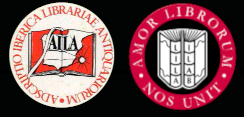


Home |
Temáticas |
Catálogos |
Pedidos |
  |  |
|||||||
|

|
RUGENDAS. (Johann Moritz) HABITANTE DE GOYAS, QUADRO A ÓLEO PINTADO SOBRE MADEIRA. |
|
|
Clique nas imagens para aumentar. MANUSCRITO - RIBEIRO. (João) TRATADO DA GUERRA DE CEILÃ [Ilha de Ceilão, actual Sri Lanka]emtrada [sic] dos Ollandesses na Ilha, perda da mesma Ilha. s.l.: s.n. s. d. [início do século XVIII]. Manuscrito sobre papel, frontispício com uma cercadura ilustrada com motivos florais. De 21,3x16 cm. Com [iv] 229, [v] págs. Encadernação em pergaminho da época, um pouco cansada; alguns picos de traça marginais junto ao festo sem afectar o texto, acidez própria da qualidade do papel, vestígios de atilhos. Manuscrito da célebre obra do Capitão João Ribeiro, em que o autor narra os últimos anos de domínio português de Ceilão, de 1640 a 1658, os constantes combates com os invasores holandeses e com o Rajasinha II, do Reino de Candia, nomeadamente o épico cerco de Colombo, onde os portugueses resistiram ao ataque holandês, desde Outubro de 1655 até Maio de 1656 e a última resistência até à queda da fortaleza de Jafnapatão, a última que ficou na posse de Portugal até 1658. Na última parte da obra, João Ribeiro critica a política colonial de Portugal por ser excessivamente ambiciosa e estabelecer objectivos muito superiores às capacidades humanas e económicas do país. O autor defende que se devia limitar os domínios portugueses às cidades conquistadas por Afonso de Albuquerque e à Ilha de Ceilão que segundo Ribeiro é o melhor pedaço de terra que o Creador pos neste mundo. A obra, além do interesse para o estudo do domínio de Portugal, na ilha descoberta por D. Lourenço de Almeida em 1506, tem grande valor para o estudo do povo cingalês do ponto de vista da história, linguística, antropologia, etnologia e cultura. Manuscrito completo, um dos vários feitos durante os séculos XVII e XVIII, quando a obra circulou em manuscrito por não ter sido editada em vida do autor, como era costume durante o Antigo Regime em Portugal. Apresenta numeração manuscrita até página 228, mas tem realmente 229 páginas pois, por engano, o número 221 está repetido. O texto é composto por 60 capítulos, o índice escrito com tinta mais clara só regista até ao capítulo 50. É um subsídio muito importante para a realização de uma muito necessária edição crítica desta valiosa obra, que até ao presente só conheceu edições de divulgação baseadas em manuscritos avulsos, cujas variantes não foram estudadas. Na Biblioteca Nacional existem três manuscritos desta obra, (BN COD. 518, 530 e 531) com diferenças entre cada um, sendo um deles incompleto. Na Academia das Ciências de Lisboa existe o manuscrito que serviu de base à edição de 1836 e o historiador Boxer possuía um quinto manuscrito. Até aos nossos dias foram publicadas as seguintes edições em português e traduções para francês e inglês: O texto em português foi publicado pela primeira vez na Colecção de Notícias para a História e Geografia das Nações Ultramarinas em 1836. Em 1701 já tinha sido publicada uma tradução em língua francesa, com base num manuscrito defeituoso, sob o título: Histoire de l’ Isle de Ceylan, écrite par le Capitain Jean Ribeyro, & presentée au Roy du Portugal en 1685. A Trevoux, chez Etienne Ganeau, directeur de l’imp. de S. A. S. monsegneur Prince Souverain de Dombes, 1701. Esta tradução francesa serviu de base à primeira tradução inglesa: History of Ceylon presented by captain John Ribeyro to the King of Portugal in 1685. Translated from the portuguese, by the Abbe Le Grand. Retranslated from the french edition, with an appendix, containing chapters illustrative, of the past and present condition of the Island by George Lee. Ceylon. Printed at the Government Press. Colombo. 1847. Nova tradução para inglês foi realizada pelo Dr. Paul E. Pieris, com 1ª edição em Ceilão 1909 e depois sucessivamente reeditada em 1948 e 1949. A segunda edição em português, com fins de divulgação, saiu com o seguinte título: Fatalidade Histórica da Ilha de Ceilão. Biblioteca da Expansão Portuguesa. 3. Edições Alfa. Lisboa. 1989. Com comentário do Prof. Luís Albuquerque. Charles Ralph Boxer. Captain João Ribeiro and his History of Ceilan 1622-1695. JRAS, Journal of the Royal Asiatic Society. 1-2, Abril, 1955. p 1-12. Inocêncio, IV, 25 e X, 338.
Binding: contemporary parchment, slightly worn. Some traces of bookworm by the inside joints not affecting text; some foxing and traces of leather straps. Manuscript of the famous work of Captain João Ribeiro, where the author writes about the last years of the Portuguese dominion of Ceylon from 1640 to 1658; the continuous fights with the Dutch invaders and Rajasingha II of the Kandyan Kingdom, especially the epic siege of Colombo where the Portuguese resisted to the Dutch attacks from October 1655 to May 1656, until the fall of Jafnapatan, the last castle under Portuguese dominion, in 1658. In the last part of his work, João Ribeiro criticises the colonial Portuguese policies for being too ambitious and setting goals way beyond Portugal’s human and economic abilities. The author advocates that the Portuguese dominion should be limited to the cities conquered by Afonso de Albuquerque and Ceylon Island that, according to him, is the best piece of land that the Creator has placed in this world. Besides the interest to the study of the Portuguese dominion of the Island discovered by D. Lourenço de Almeida in 1506, this work is of great value for the study of the Singhalese people from an historical, linguistic, anthropological, ethnological, and cultural point of view. A complete manuscript, one of several made through the 17th and 18th centuries, when the work circulated in manuscript because, as was costume in Portugal at the time, it hadn’t been printed before the author’s death. The pages are manually numbered until page 228, but in fact it has 229 pages, since, by mistake number 221 is repeated. The text is divided into 60 chapters. The index, in a different handwriting in lighter ink, only registers 50 chapters. It is a very important contribute for a much needed critical edition of this precious work, which until now had only dissemination publications based on loose manuscripts whose variants have not been studied. In the Portuguese National Library there are three manuscripts of this work, (BN COD. 518, 530 and 531) different among each other, and one being incomplete. The Sciences Academy of Lisbon is in possession of the manuscript that was the base of the 1836 edition, and the historian Boxer had the fifth manuscript. Until today there were published the following editions in Portuguese and translations into French and English: The text in Portuguese was printed for the first time in “Colecção de Notícias para a História e Geografia das Nações Ultramarinas” in 1836. In 1701 there had already been published a French translation, based on a defective manuscript, with the title: “Histoire de l’ Isle de Ceylan, écrite par le Capitain Jean Ribeyro, & presentée au Roy du Portugal en 1685”. A Trevoux, chez Etienne Ganeau, directeur de l’imp. de S. A. S. Monsegneur Prince Souverain de Dombes, 1701. This French translation was the base of the first English translation: History of Ceylon presented by Captain John Ribeyro to the King of Portugal in 1685. Translated from the Portuguese, by the Abbe Le Grand. Retranslated from the French edition, with an appendix, containing chapters illustrative of the past and present condition of the Island by George Lee. Ceylon. Printed at the Government Press. Colombo. 1847. A new translation into English was made by Dr. Paul E. Pieris, with a first edition in Ceylon, 1909, and after reprinted in 1948 and 1949. The second Portuguese edition had the title Fatalidade Histórica da Ilha de Ceilão. Biblioteca da Expansão Portuguesa. 3. Edições Alfa. Lisboa. 1989. Commented by Professor Luís Albuquerque. Charles Ralph Boxer. Captain João Ribeiro and his History of Ceylon 1622-1695. JRAS, Journal of the Royal Asiatic Society. 1-2, Abril, 1955. p. 1-12. Inocêncio, IV, 25 e X, 338. Referência: 1911PG006
Local: M-9-A-56 Indisponível Caixa de sugestões A sua opinião é importante para nós. Se encontrou um preço incorrecto, um erro ou um problema técnico nesta página, por favor avise-nos. 
|
Pesquisa Simples




|
||
 |
|||
|